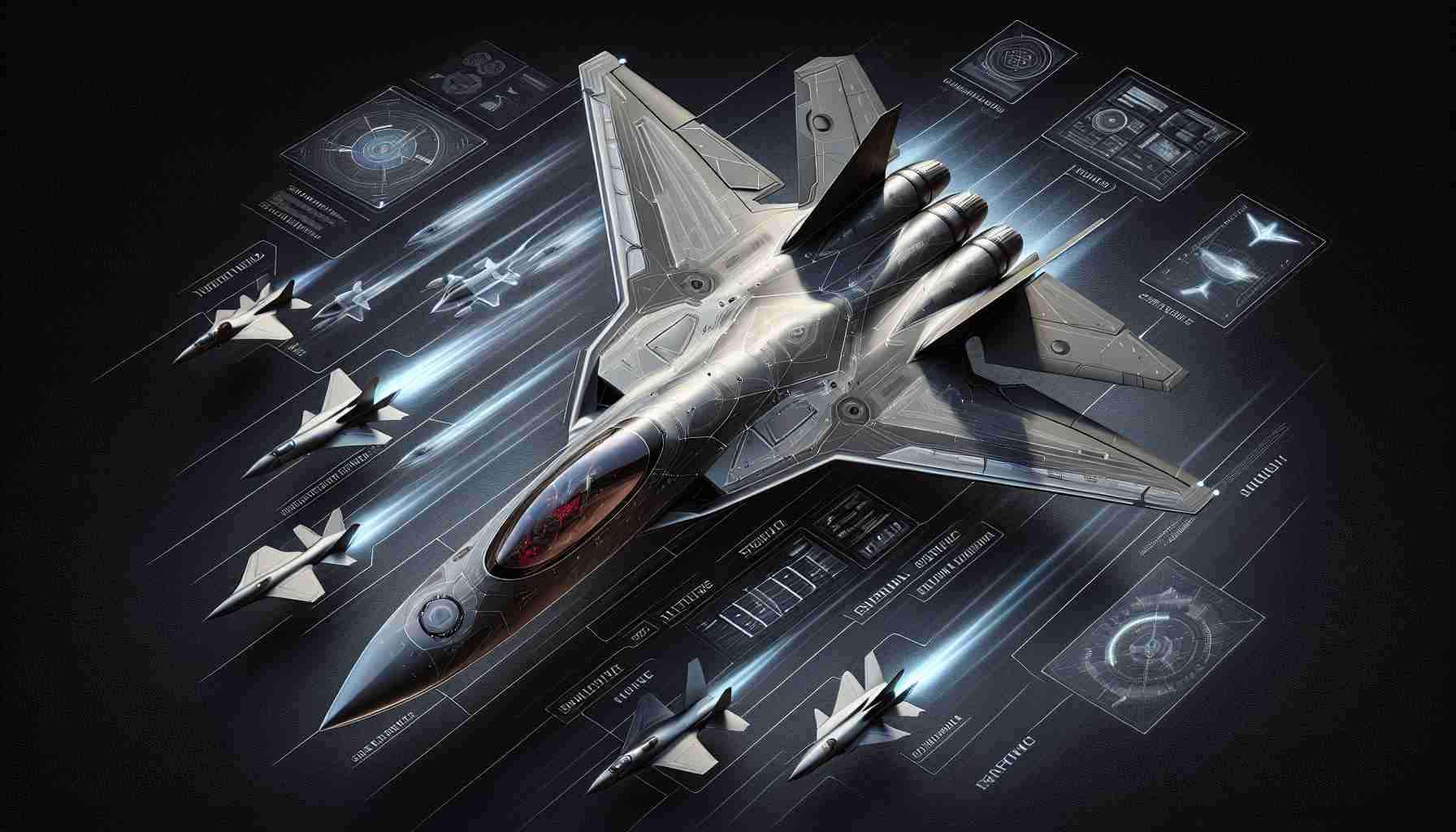Israel’s military capabilities are robust, but one aircraft remains out of reach. The F-22 Raptor is a technological marvel that Israel will never possess.
Israel sits in a region fraught with tension, and its military arsenal is one of the most formidable in the Middle East. While the nation boasts a sophisticated fleet including advanced fighter jets like the F-15, F-16, and the cutting-edge F-35, there is one aircraft that will remain exclusively in the hands of the United States: the F-22 Raptor.
Originally created during the Cold War, the F-22 Raptor represents a leap in fighter jet technology. This fifth-generation jet is designed to conduct air superiority missions while also incorporating ground attack and electronic warfare capabilities. Its stealth features make it nearly invisible to radar, allowing it to outmatch opponents effortlessly.
The Raptor’s internal weapons bay is fitted to carry a diverse range of armaments, allowing it to engage in combat effectively. With the ability to carry air-to-air missiles and precision bombs, this jet ensures dominance in the sky.
Unfortunately for other nations, U.S. legislation categorically forbids the transfer of the F-22 to allied countries. Passed in the 1990s, this law was created to protect sensitive technology from potentially adversarial nations. Given the geopolitical landscape, the decision to keep the Raptor domestic highlights its unmatched strategic value.
The Strategic Landscape of Air Power and Its Global Implications
The restriction on the export of the F-22 Raptor to allied nations underscores a significant shift in military strategy and technological dominance. This decision not only impacts Israel but also illuminates broader themes in global military alliances. As countries like Israel, with a pressing imperative for advanced defense capabilities, seek to fortify their aerial combat strength, the chasm in access to cutting-edge technology may breed regional instability. The inability to harness the F-22 Raptor’s unmatched capabilities could compel nations to escalate their own military innovation or form tighter alliances to compensate for technological disparities.
Moreover, the implications extend beyond military might— they seep into the very core of international relations. Countries that possess fifth-generation fighters like the F-35 experience an enhanced diplomatic leverage, often influencing the calculus of arms deals and defense partnerships globally. This creates a two-tiered system of military capabilities, where access to cutting-edge technologies can dictate the responsiveness of nations to conflicts.
Environmental considerations also loom large in this competitive aerial landscape. The operational and logistical demands of flying such advanced aircraft fuel concerns over carbon emissions. As militaries ramp up their air operations, the environmental cost of maintaining superiority in the skies may push nations to rethink their operational strategies for a more sustainable approach.
In the long term, the technological advancements embodied by the F-22 could dictate military doctrines, driving an ongoing arms race that prioritizes stealth and advanced electronic warfare systems. As nations race to retain or gain parity in air power, the ramifications—both societal and ecological—may reshape the geostrategic landscape for generations to come.
The Unattainable F-22 Raptor: Understanding Its Impact and Alternatives for Israel
Israel’s military capabilities are formidable in the tumultuous landscape of the Middle East, bolstered by a sophisticated arsenal that includes advanced fighters like the F-15, F-16, and the innovative F-35. However, one aircraft remains exclusively with the United States: the F-22 Raptor. This article delves into the implications of this exclusivity, explores Israel’s current military strategies, and considers potential alternatives.
Features of the F-22 Raptor
The F-22 Raptor is a pinnacle of fifth-generation fighter jet design. Some of its defining features include:
– Stealth Technology: Capable of evading radar detection, it maintains a strategic edge in air superiority.
– Supercruise Ability: The F-22 can fly at supersonic speeds without afterburners, providing it with exceptional range and efficiency in combat missions.
– Advanced Avionics: Equipped with an array of sensor technologies, the Raptor enhances situational awareness, allowing for superior targeting capabilities.
– Versatility: It performs multiple roles, including air-to-air and air-to-ground strikes, as well as electronic warfare.
Why Israel Cannot Acquire the F-22
U.S. legislation restricts the sale of the F-22 Raptor to protect its advanced technology, which is deemed crucial for maintaining military superiority. This policy underscores the aircraft’s strategic significance amid changing geopolitical dynamics, limiting its availability to even close allies like Israel.
Alternatives Available for Israel
Given the constraints surrounding the F-22, Israel continues to enhance its military arsenal with other advanced aircraft. The following alternatives showcase Israel’s strategic focus:
– F-35 Lightning II: This stealth multirole fighter includes advanced sensors and networking capabilities, making it a suitable alternative to the F-22 for Israel.
– Upgraded F-15s and F-16s: Continuous upgrades to these existing platforms improve their capabilities, ensuring they remain competitive in modern combat scenarios.
Implications for Israel’s Defense Strategy
Israel’s inability to acquire the F-22 has led to several strategic implications:
– Emphasis on Technological Innovation: Israel invests heavily in its own defense technologies, such as drones and cybersecurity measures, to counterbalance the lack of access to the Raptor.
– Strengthening International Partnerships: Collaboration with the U.S. and other allies can provide Israel with strategic capabilities that offset the non-access to certain aircraft.
Pros and Cons of Israel’s Military Strategy
| Pros | Cons |
|——————————————–|——————————————–|
| Strong alliance with the U.S. | Reliance on foreign military support |
| Access to cutting-edge technologies (F-35) | Limited options for certain advanced jets |
| High levels of military innovation | Potential technology gaps in air superiority |
What Lies Ahead: Predictions and Trends
As military technology continues to evolve, Israel is likely to explore additional defensive strategies and diplomatic avenues to enhance its air capabilities. Investing in the development of indigenous platforms and software capabilities will be essential for maintaining regional superiority.
Conclusion
While the F-22 Raptor epitomizes unparalleled military technology, Israel’s military prowess remains robust through alternative solutions and continued innovation. Understanding the limitations and exploring partnerships will play a critical role in Israel’s defense strategy as it seeks to address the challenges of its geopolitical environment.
For further insights into advanced military technologies and strategies, visit Lockheed Martin.







